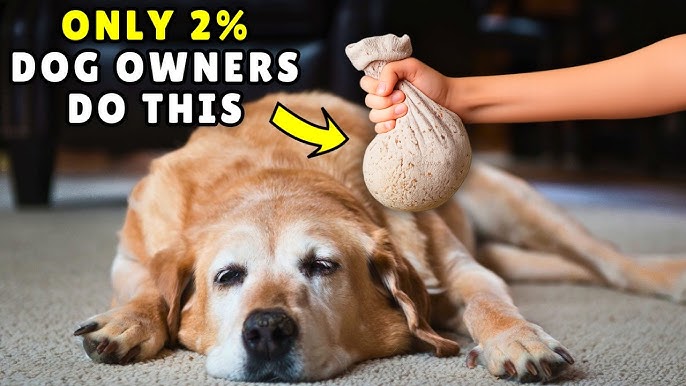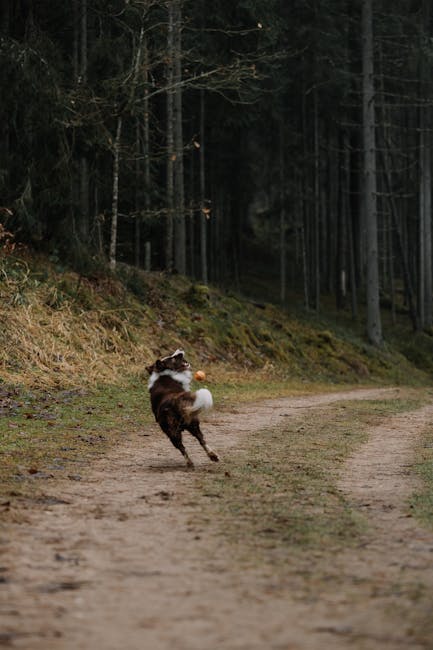You love letting your dog run free, but when they dart off, your heart races. You want to enjoy those off-leash moments without the stress of chasing or worrying.
Imagine having a dog that stays close, listens to you, and comes back every time you call. You’ll discover simple, effective ways to stop your dog from running away when off-leash. By the end, you’ll feel confident and relaxed during your outdoor adventures together.
Keep reading—you’re about to make your time with your dog safer and more enjoyable.
Reasons Dogs Run Off
Understanding why your dog runs off when off-leash is key to keeping them safe and close. Dogs have different reasons for wandering away, and knowing these can help you address the root cause effectively. Let’s break down some common triggers that push dogs to bolt unexpectedly.
Instinct And Curiosity
Dogs have natural instincts that push them to explore their surroundings. Whether it’s the scent of wildlife or a rustling in the bushes, their curiosity can be overwhelming.
I once watched my usually calm dog dart after a squirrel during a walk. It was a sharp reminder that instincts can take over, even with the best training. How can you balance their natural urges with safe boundaries?
Lack Of Training
Without solid recall training, your dog might not respond when called. This makes it easier for them to run off and ignore your commands.
Training isn’t just about commands; it’s about building trust and communication. Have you practiced recall in different environments to ensure your dog listens no matter the distractions?
Fear And Anxiety
Fear can trigger a dog to run away suddenly. Loud noises, unfamiliar places, or strangers might cause your dog to bolt as a way to escape stress.
Recognizing signs of anxiety early can prevent dangerous situations. What steps can you take to make your dog feel more secure in new or stressful environments?
Attraction To Other Animals
Other dogs, cats, or wildlife can be a strong lure for your dog to run after. This attraction often overrides their training and your calls.
Have you noticed your dog’s reaction when spotting another animal? Managing these impulses requires consistent training and sometimes controlled exposure.

Credit: www.youtube.com
Choosing The Right Training Tools
Choosing the right training tools plays a key role in stopping a dog from running away off-leash. The right equipment helps keep control while building trust and good behavior. Select tools that suit your dog’s size, strength, and personality. Comfort and safety matter a lot. Proper tools also make training easier and more effective.
Leashes And Harnesses
Leashes and harnesses offer direct control over your dog. Harnesses spread pressure evenly, avoiding neck strain. Leashes come in various lengths and materials. Choose a sturdy leash that fits your dog’s size. A well-fitted harness prevents slipping out during walks or training. This helps keep your dog close and safe.
Long Lines For Control
Long lines give dogs some freedom while keeping control. These extended leashes range from 15 to 50 feet. They allow dogs to explore without full freedom to run away. Long lines help practice recall in open spaces. Use them to teach your dog to come back reliably. They provide a safe way to build off-leash skills.
Clickers And Treats
Clickers and treats work as positive reinforcement tools. Clickers make a clear sound to mark good behavior. Treats reward dogs immediately for obeying commands. This combination helps dogs understand what you want. Use small, tasty treats that your dog loves. Consistent rewards encourage your dog to stay close and listen.
Basic Recall Training Techniques
Basic recall training is key to keeping your dog safe off-leash. It teaches your dog to come back when called. This builds trust and control during outdoor activities. The training requires patience and clear communication. Using simple steps helps your dog learn faster and enjoy the process.
Start With Short Distances
Begin recall training in a quiet, familiar place. Call your dog from a short distance, about 5 to 10 feet. Use a happy voice and clear commands like “come” or your dog’s name. Reward your dog immediately when they come to you. Gradually increase the distance as your dog improves. Short distances build confidence and reduce distractions.
Use Positive Reinforcement
Positive reinforcement encourages your dog to repeat good behavior. Offer treats, praise, or play when your dog responds correctly. Avoid punishment if your dog does not come right away. Keep training sessions fun and rewarding. This makes your dog want to listen to you. Consistent rewards strengthen the recall command.
Practice Regularly
Practice recall training every day to keep skills sharp. Use different locations to help your dog generalize the command. Keep sessions short, around 5 to 10 minutes, to maintain focus. Practice before walks or playtime to make training part of your routine. Regular practice builds a reliable recall over time.

Credit: www.youtube.com
Advanced Recall Strategies
Advanced recall strategies help improve your dog’s response to coming back. These techniques build strong habits for off-leash control. They prepare your dog to listen even in tricky situations. Practice is key to making recall reliable and fast.
Adding Distractions
Start recall training with small distractions. Gradually increase distractions over time. Use toys, other dogs, or people nearby. This teaches your dog to focus on you despite noise or activity. Reward your dog quickly when it responds. Keep training sessions short and fun.
Training In Different Environments
Practice recall in many places. Try parks, streets, and open fields. Changing locations helps your dog learn to obey anywhere. It also prevents your dog from only responding in one spot. Vary the time of day for training too. This builds strong, consistent recall habits.
Emergency Recall Commands
Use a special command for urgent recall. This command should be unique and clear. Train your dog to respond every time you say it. Use high-value treats or favorite toys as rewards. Practice emergency recall often in safe areas. This command can save your dog in dangerous situations.
Preventing Escape Opportunities
Preventing escape opportunities is key to keeping your dog safe off-leash. Dogs often run away through gaps or open gates. By reducing these chances, you lower the risk of your dog running off. Creating a secure and supervised environment helps your dog stay close and enjoy outdoor time safely.
Secure Yard And Fencing
Check your yard for weak spots in fences. Fix any holes or gaps that your dog could squeeze through. Use tall fences to prevent jumping over. Consider adding barriers at the base to stop digging under. Gates should always be closed and locked. A secure yard forms a strong boundary your dog cannot easily break.
Supervised Outdoor Time
Watch your dog closely while outside. Supervision helps you stop escape attempts quickly. Stay alert for any signs your dog wants to run. Bring your dog inside if you cannot watch closely. Supervised time builds trust and reduces the chance of running off. It also helps your dog learn boundaries safely.
Identifying Escape Routes
Walk around your property to find possible escape paths. Look for loose boards, open gates, or low fences. Notice spots where your dog likes to dig or push through. Mark these areas and repair them promptly. Understanding escape routes helps you block them effectively. Keep your dog safe by controlling all exit points.

Credit: www.youtube.com
Using Mental And Physical Exercise
Keeping your dog mentally and physically active is key to preventing them from running away when off-leash. Dogs that are tired both in body and mind are less likely to seek adventure elsewhere. How can you make sure your dog gets enough exercise to stay focused and close to you?
Daily Walks And Playtime
Regular walks do more than just burn energy—they build a routine that your dog can rely on. Try varying the route sometimes to keep things interesting, but keep the timing consistent. Playtime with fetch or tug-of-war adds excitement and strengthens your bond, making your dog less likely to wander off.
Interactive Toys
Interactive toys challenge your dog’s brain and keep them busy, reducing boredom that might lead to escape attempts. Puzzle feeders or treat-dispensing toys make your dog work for their reward, which is both fun and mentally tiring. Have you noticed how your dog settles down after a session with these toys? That calmness helps them listen better when off-leash.
Training Games
Training games sharpen your dog’s focus and obedience, which are crucial when off-leash. Simple recall games where your dog comes to you for treats teach reliability. You can also practice “stay” and “leave it” commands during play to reinforce control. These games turn training into fun, so your dog looks forward to listening.
When To Seek Professional Help
Knowing when to seek professional help can make a big difference in stopping your dog from running away when off-leash. Sometimes, the issue goes beyond basic training and requires expert guidance. Recognizing these moments early can save you time, stress, and keep your dog safe.
Behavioral Issues
Some dogs run away due to underlying behavioral problems like anxiety, fear, or a strong prey drive. If your dog frequently escapes despite your best efforts, it might indicate deeper emotional struggles. Professionals can help identify triggers and provide tailored strategies to address these issues effectively.
Advanced Training Needs
Basic commands may not be enough for dogs with high energy or strong instincts. If your dog ignores recalls or bolts at the slightest distraction, advanced training could be necessary. Trainers with experience in off-leash control can teach you techniques that improve focus and reliability in challenging environments.
Working With Trainers And Behaviorists
Partnering with a professional trainer or behaviorist brings fresh insight and proven methods to your situation. They observe your dog’s behavior objectively and customize a plan that fits your lifestyle. Have you considered how expert guidance might unlock your dog’s full potential for safe off-leash adventures?
Frequently Asked Questions
How Can I Train My Dog To Stay Close Off-leash?
Start with basic commands like “come” and “stay” in a controlled area. Use treats and positive reinforcement consistently. Gradually increase distractions and distance. Always reward your dog for returning promptly. Regular practice builds trust and reliability when off-leash.
What Are The Best Tools To Prevent Dog Escape?
Use a long training leash or a GPS tracker for safety. A well-fitted harness reduces slipping risk. Training collars can help but use them cautiously. These tools aid control while teaching your dog to stay nearby.
Why Do Dogs Run Away When Off-leash?
Dogs run off due to instinct, curiosity, or fear. They might chase animals, explore new scents, or escape stress. Understanding triggers helps in managing behavior and preventing escapes. Proper training addresses these root causes effectively.
How To Recall My Dog Reliably Off-leash?
Use a consistent recall command with enthusiastic tone. Reward your dog immediately with treats or praise. Practice in safe, low-distraction environments first. Increase difficulty gradually to strengthen response. Reliable recall ensures your dog’s safety off-leash.
Conclusion
Stopping a dog from running away takes time and patience. Consistent training builds trust and good habits. Use treats and praise to encourage your dog. Always practice in safe, enclosed areas first. Remember, every dog learns at its own pace.
Keep sessions short and fun to avoid stress. Staying calm helps your dog feel secure. With steady effort, your dog will stay close off-leash. Enjoy the freedom and safety together.

